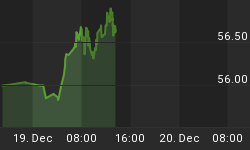Technical and fundamental factors seem to support EUR/USD falling to 1.36/1.32 over the medium term.
Europe: Recovering, but not so fast
During April's meeting, the European Central Bank (ECB) postponed to the coming months any decision on rate. However, Mr. Draghi said quantitative easing is a possibility, since the bank does not want inflation to stay too low for too long. In March, it was 0.5%, the lowest level since 2009. Prices also are falling in Portugal, Spain, and Greece. They remained stable in Italy and France. A strong euro does not help, since companies are pressured to cut costs and/or reduce margins. The Council recognizes tangible improvements in economic growth. Nonetheless, recovery remains mild and unemployment high, supporting a persistent accommodative scenario. EUR/USD finds various levels of resistance, from 1.3850-1.40. It could withhold current upside pressure, considering the divergence of price and Relative Strength Indicators (RSIs) on the weekly/daily charts, and re-address prices toward 1.36 and, eventually, 1.32 in the medium term.
U.S. unemployment still an issue
During a speech in Chicago, Fed Chair Janet Yellen confirmed that unemployment still is a priority. Labor "underutilization," which is higher than 2001, recessionary levels, is the main focus. In fact, there still are a larger number of people working part time, despite wanting full-time work. In addition, finding work could require more than six months. The study of cycles seems to anticipate that unemployment will bottom out sometime in 2014 and then will rise again toward the highs of the final, third wave. The private sector still is repaying debt, and consumption is under performing. Gross domestic product (GDP) growth from 2010-2013 (1.5%) was less than growth from 2003-2006 (2.2%). On the other hand, U.S. companies are doing much better, as external demand is supportive. The Fed will keep its bond-buying program unleashed, and this should support the dollar over the coming months.















